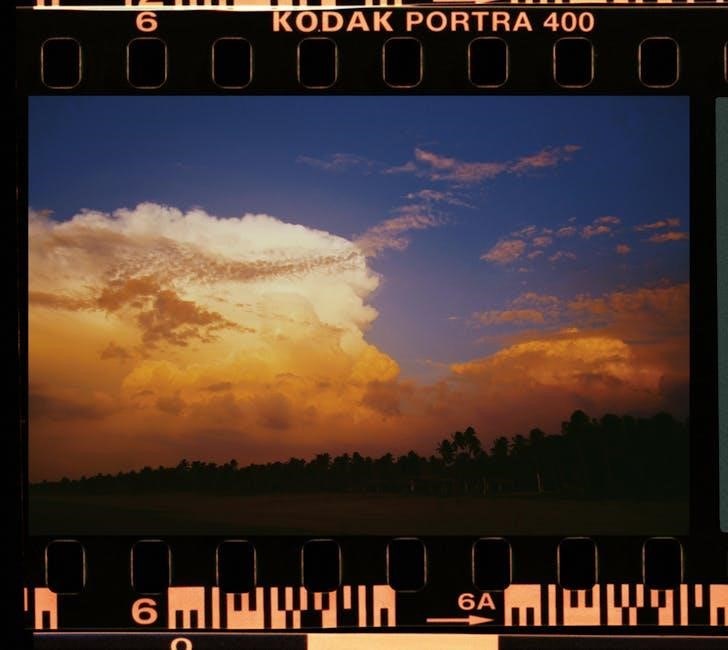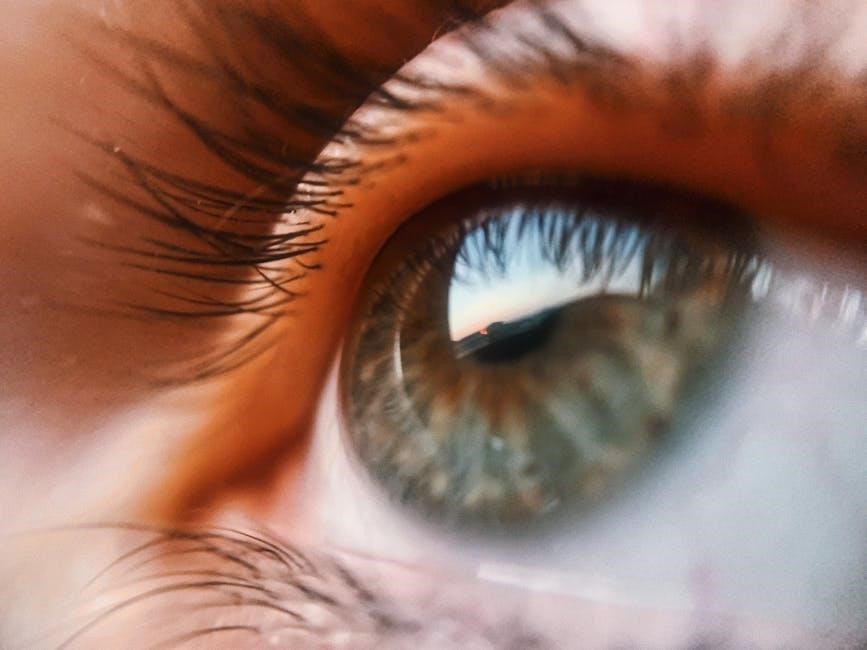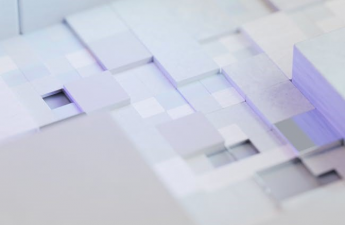Image-Guided Superficial Radiation Therapy (IGSRT) is a non-invasive, non-surgical treatment using low-energy X-rays to target skin cancers, guided by high-frequency ultrasound for precise tumor visualization and effective treatment.
1.1 Definition and Overview
Image-Guided Superficial Radiation Therapy (IGSRT) is a non-invasive, non-surgical treatment that uses low-energy X-rays to target non-melanoma skin cancers. It combines high-frequency ultrasound imaging with precise radiation delivery to ensure accurate tumor targeting while minimizing damage to surrounding healthy tissue. This advanced therapy is particularly effective for basal and squamous cell carcinomas, offering a surgery-free alternative with superior cosmesis and high cure rates.
1.2 Importance of Imaging in SRT
Imaging is critical in Image-Guided SRT, as it enables precise visualization of skin cancers using high-frequency ultrasound (22 MHz); This technology ensures accurate tumor targeting, allowing for effective radiation delivery while minimizing exposure to surrounding healthy tissue. The integration of real-time imaging enhances treatment accuracy, reduces side effects, and improves cosmetic outcomes, making it a cornerstone of modern skin cancer therapy.

Purpose and Functionality
Image-Guided SRT precisely delivers low-energy X-rays to treat non-melanoma skin cancers, combining ultrasound imaging for accurate tumor targeting and minimizing harm to healthy tissue, ensuring effective treatment.
2.1 Why Image-Guided Technology is Used
Image-Guided SRT uses advanced ultrasound imaging to precisely target skin cancer lesions, ensuring accurate radiation delivery while sparing healthy tissue. This technology enhances treatment effectiveness, improves patient outcomes, and minimizes side effects. Its non-invasive nature and ability to achieve high cure rates make it a preferred option for treating non-melanoma skin cancers, offering superior cosmesis and safety compared to traditional methods.
2.2 Advantages Over Traditional SRT
Image-Guided SRT offers superior precision and accuracy compared to traditional SRT, thanks to high-resolution ultrasound guidance. This results in better tumor targeting, reduced exposure to surrounding healthy tissue, and improved cosmetic outcomes. Additionally, IG-SRT provides real-time visualization, enabling adjustments for optimal treatment delivery, leading to higher cure rates and lower recurrence rates while maintaining a high safety profile for patients.
2.3 Role in Non-Melanoma Skin Cancer Treatment
Image-Guided SRT is a highly effective treatment for non-melanoma skin cancers, including basal cell carcinoma (BCC) and squamous cell carcinoma (SCC). It offers a non-surgical alternative, delivering low-energy X-rays precisely to cancer cells while sparing surrounding healthy tissue. The use of ultrasound guidance ensures accurate targeting, leading to high cure rates and minimal cosmetic impact, making it an ideal option for treating skin cancers effectively without surgery.

Technology Behind Image-Guided SRT
Image-Guided SRT combines high-frequency ultrasound (22 MHz) for precise tumor visualization with a low-energy X-ray delivery system, enabling targeted, non-invasive treatment of skin cancers effectively.
3.1 Imaging Modalities Used
Image-Guided SRT employs high-resolution ultrasound (HRUS) at 22 MHz for precise visualization of skin cancers. This modality provides detailed tissue imaging, enabling accurate tumor targeting and treatment delivery. The system integrates advanced ultrasound technology with radiation delivery, ensuring real-time guidance for optimal outcomes in non-melanoma skin cancer treatment.
3.2 High-Resolution Ultrasound (HRUS) in SRT
High-Resolution Ultrasound (HRUS) at 22 MHz is a cornerstone of Image-Guided SRT, providing exceptional clarity in visualizing skin structures. This advanced imaging modality enables precise identification of tumor boundaries and surrounding tissue, ensuring accurate radiation delivery. HRUS guides the treatment with real-time feedback, minimizing exposure to healthy tissue while maximizing therapeutic effectiveness, making it indispensable in non-melanoma skin cancer treatment.
3.3 Radiation Delivery System
The radiation delivery system in Image-Guided SRT utilizes low-energy X-rays to precisely target cancer cells. This system operates in conjunction with HRUS, ensuring accurate alignment of radiation beams with tumor sites. The technology delivers controlled doses, minimizing exposure to surrounding healthy tissue. Its design prioritizes safety and efficacy, making it an advanced tool for treating non-melanoma skin cancers with high precision and minimal side effects.

Treatment Process
Image-Guided SRT combines high-resolution ultrasound imaging with precise radiation delivery, ensuring accurate targeting of skin cancers while minimizing exposure to healthy tissue, optimizing treatment outcomes and safety.
4.1 How Image-Guided SRT Works
Image-Guided SRT uses high-frequency ultrasound imaging to precisely visualize skin cancers. This real-time guidance ensures accurate targeting, allowing low-energy X-rays to be delivered directly to the tumor. The process involves imaging the lesion, marking its boundaries, and administering radiation in controlled doses. This non-invasive approach minimizes exposure to healthy tissue, optimizing both safety and effectiveness, leading to high cure rates for non-melanoma skin cancers.
4.2 Patient Preparation and Setup
Patient preparation involves cleaning the treatment area and removing any makeup or creams. A thin layer of ultrasound gel is applied to enhance imaging clarity. The patient is positioned comfortably, and the lesion is mapped using ultrasound guidance. The treatment site is marked with a laser to ensure precise alignment. The system is then calibrated using live imaging to confirm accurate radiation delivery parameters.
4.3 Delivery of Radiation
Low-energy X-rays are delivered precisely to the tumor site using real-time ultrasound guidance, ensuring accurate targeting. This minimizes exposure to surrounding healthy tissue. The radiation is administered in controlled doses, optimizing effectiveness while maintaining safety. The process is painless, with patients experiencing minimal discomfort. This advanced delivery system allows for optimal treatment outcomes and promotes healthy tissue healing post-therapy.

Benefits and Advantages
Image-Guided SRT offers a non-invasive, high cure rate treatment with superior cosmesis and safety, making it highly effective for basal and squamous cell carcinomas;
5.1 Non-Surgical and Non-Invasive
Image-Guided SRT is a non-surgical and non-invasive treatment, eliminating the need for incisions or stitches, which reduces recovery time and minimizes scarring. This approach preserves healthy tissue, maintaining cosmetic integrity while effectively targeting cancer cells. The non-invasive nature makes it ideal for sensitive areas, offering a comfortable and stress-free alternative to traditional surgery.
5.2 High Cure Rates and Effectiveness
Image-Guided SRT boasts high cure rates, with studies showing a 99% effectiveness for non-melanoma skin cancers. Its precision ensures targeted treatment, minimizing damage to surrounding tissue. The therapy’s low-energy X-rays effectively destroy cancer cells while preserving healthy tissue, leading to excellent clinical outcomes and patient satisfaction, making it a highly reliable option for treating basal and squamous cell carcinomas.
5.3 Superior Cosmesis and Safety Profile
Image-Guided SRT offers superior cosmesis, minimizing damage to surrounding healthy tissue and preserving skin appearance. Its low-energy X-rays reduce side effects, ensuring a safer profile compared to traditional treatments. Patients often experience minimal scarring, making it an aesthetically favorable option, especially for visible areas like the face. This therapy is highly regarded for its balance of efficacy and cosmetic outcomes, enhancing patient satisfaction and quality of life.

Conditions Treated
Image-Guided SRT effectively treats basal cell carcinoma, squamous cell carcinoma, and other non-melanoma skin cancers, offering a precise and non-invasive solution for various skin cancer types.
6.1 Basal Cell Carcinoma (BCC)
Basal cell carcinoma (BCC) is the most common type of skin cancer, often occurring in sun-exposed areas like the face, neck, and hands. Image-Guided SRT is highly effective for treating BCC, offering a non-invasive alternative to surgery. Using low-energy X-rays guided by high-resolution ultrasound, IGSRT precisely targets cancer cells while preserving surrounding healthy tissue. This results in high cure rates and excellent cosmetic outcomes, making it ideal for visible areas.
6.2 Squamous Cell Carcinoma (SCC)
Squamous Cell Carcinoma (SCC) is the second most common type of skin cancer, often linked to prolonged sun exposure. Image-Guided SRT effectively treats SCC by delivering low-energy X-rays, guided by high-resolution ultrasound, to precisely target cancer cells. This non-invasive approach minimizes damage to healthy tissue, offering high cure rates and excellent cosmetic outcomes, especially for lesions in cosmetically sensitive areas.
6;3 Other Non-Melanoma Skin Cancers
Image-Guided SRT is also effective for other non-melanoma skin cancers, such as Merkel Cell Carcinoma and Cutaneous T-Cell Lymphoma. Its precision in targeting tumors, even in sensitive areas, ensures minimal damage to surrounding tissue. This non-invasive approach offers high cure rates and excellent cosmetic outcomes, making it a preferred treatment for various skin cancers beyond BCC and SCC.

Comparison with Other Treatments
Image-Guided SRT offers superior precision and outcomes compared to non-image-guided SRT, brachytherapy, and traditional radiotherapy, ensuring high cure rates, minimal side effects, and excellent cosmetic results.
7.1 vs. Non-Image-Guided SRT
Image-Guided SRT surpasses non-image-guided SRT by utilizing high-frequency ultrasound for precise tumor visualization, ensuring accurate radiation delivery. This enhances treatment effectiveness, reduces side effects, and improves cosmetic outcomes. Unlike non-image-guided SRT, Image-Guided SRT provides real-time imaging, allowing for superior targeting of cancer cells while sparing healthy tissue. This advanced technology leads to higher cure rates and better patient satisfaction, making it a preferred option for non-melanoma skin cancers.
7.2 vs. Brachytherapy
Image-Guided SRT offers a non-invasive alternative to brachytherapy, eliminating the need for implanted radioactive sources. It uses high-frequency ultrasound for precise tumor targeting, reducing the risk of complications and improving cosmetic outcomes. With comparable efficacy, Image-Guided SRT provides a safer, more patient-friendly option for treating non-melanoma skin cancers, achieving high cure rates without the invasiveness of brachytherapy.
7.3 vs. Traditional Radiotherapy
Image-Guided SRT surpasses traditional radiotherapy with enhanced precision, minimizing damage to surrounding tissue. Utilizing low-energy X-rays, it reduces side effects and offers superior cosmetic outcomes. Its non-invasive approach and high cure rates make it a preferred choice for treating non-melanoma skin cancers, outperforming conventional radiotherapy in both efficacy and patient comfort.

Availability and Accessibility
Image-Guided SRT is now available in over 360 dermatology practices across nearly all 50 states, expanding access nationwide and enhancing treatment accessibility for patients.
8.1 Where Image-Guided SRT is Available
Image-Guided SRT is now accessible in over 360 dermatology practices across nearly all 50 states. SkinCure Oncology, a leader in this field, has expanded its network significantly, ensuring widespread availability. This treatment is particularly popular in practices offering Mohs micrographic surgery, with growing adoption in both urban and rural areas, making it a widely accessible option for non-melanoma skin cancer patients nationwide.
8.2 Expansion Across the United States
Image-Guided SRT is rapidly expanding across the U.S., with availability in over 360 dermatology practices spanning nearly all 50 states. SkinCure Oncology leads this growth, partnering with local practices to increase access. This widespread expansion ensures patients across diverse regions can benefit from this innovative treatment, making it a cornerstone in modern skin cancer care nationwide.
8.3 Growing Popularity in Dermatology Practices
Image-Guided SRT is gaining widespread acceptance in dermatology due to its high cure rates, non-invasive nature, and superior cosmesis; Its adoption by over 360 practices nationwide highlights its growing popularity. Dermatologists favor it for its precision and patient-friendly outcomes, making it a preferred treatment for non-melanoma skin cancers, aligning with modern dermatological care standards and patient preferences for effective, non-surgical solutions.

Recent Developments and Research
Recent studies highlight advancements in Image-Guided SRT, showcasing improved cure rates and enhanced precision. Innovations in ultrasound technology and treatment protocols continue to refine its effectiveness and safety.
9.1 Studies Supporting Image-Guided SRT
Recent studies demonstrate Image-Guided SRT’s efficacy, with high cure rates for non-melanoma skin cancers. Research highlights its superiority over traditional treatments, emphasizing improved cosmesis and safety. Clinical trials show it achieves excellent outcomes with minimal side effects, solidifying its role as a first-line treatment for early-stage basal and squamous cell carcinomas.
9.2 Innovations in Ultrasound Technology
Advancements in ultrasound technology, such as high-frequency imaging (22 MHz), have significantly enhanced the precision of Image-Guided SRT. These innovations allow for real-time visualization of skin cancers, improving treatment accuracy and outcomes. Enhanced resolution enables better tumor targeting, minimizing exposure to surrounding healthy tissue while ensuring effective radiation delivery, thus contributing to the overall success of IGSRT in treating non-melanoma skin cancers.
9.3 Emerging Trends in Skin Cancer Treatment
Emerging trends highlight the growing adoption of Image-Guided SRT as a preferred treatment for non-melanoma skin cancers. Its non-invasive nature, high cure rates, and superior cosmesis are driving its popularity. Advances in ultrasound technology and expanding availability across dermatology practices further enhance its appeal. This treatment is increasingly seen as a first-line option, offering patients a surgery-free, effective, and aesthetically favorable solution for skin cancer treatment.

Future of Image-Guided SRT
Image-Guided SRT is expanding rapidly, with growing availability in dermatology practices nationwide. Technological advancements and increasing adoption promise enhanced treatment options for skin cancer and beyond.
10.1 Potential Applications Beyond Skin Cancer
While primarily used for non-melanoma skin cancers, Image-Guided SRT shows promise in treating other superficial lesions. Its precision and non-invasive nature make it a potential candidate for benign tumors, keloids, and other dermatological conditions. Researchers are exploring its applicability in deeper tissue targets, leveraging advancements in ultrasound technology for enhanced diagnostic capabilities and treatment delivery.
10.2 Technological Advancements
Advancements in ultrasound technology, such as high-frequency systems, enhance precision in tumor visualization. Innovations in radiation delivery systems improve dose accuracy and minimize side effects. These technological improvements expand treatment capabilities, ensuring safer and more effective outcomes for patients with non-melanoma skin cancer and potentially other conditions.
10.3 Increasing Adoption in Medical Practices
Image-Guided SRT is now available in over 360 dermatology practices across nearly all 50 states, with growing popularity due to its non-invasive nature and high cure rates. Its adoption is expanding rapidly, supported by partnerships like SkinCure Oncology, making it a preferred treatment option for non-melanoma skin cancers, enhancing accessibility and patient care nationwide.
Image-Guided SRT is a revolutionary, non-invasive treatment offering high cure rates for basal and squamous cell carcinomas, making it a game-changer in modern skin cancer therapy.
11.1 Summary of Key Points
Image-Guided SRT is a non-invasive, highly effective treatment for non-melanoma skin cancers, offering superior cosmesis and high cure rates. It uses low-energy X-rays guided by ultrasound for precise targeting, minimizing damage to healthy tissue. Ideal for basal and squamous cell carcinomas, it provides a surgery-free alternative with minimal side effects, making it a preferred option in modern dermatological oncology.
11.2 The Role of Image-Guided SRT in Modern Oncology
Image-Guided SRT represents a cutting-edge advancement in oncology, offering a non-invasive, precise treatment for non-melanoma skin cancers. By integrating high-resolution ultrasound with low-energy radiation, it ensures targeted tumor destruction while sparing healthy tissue. Its adoption across dermatology practices underscores its growing importance as a first-line treatment, combining efficacy, safety, and cosmetic benefits, making it a cornerstone in modern skin cancer management.



